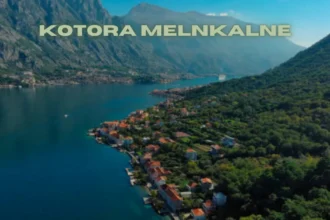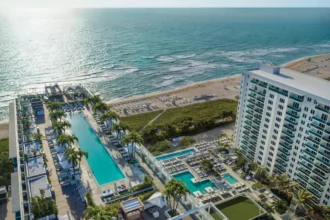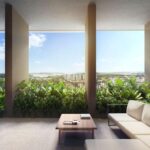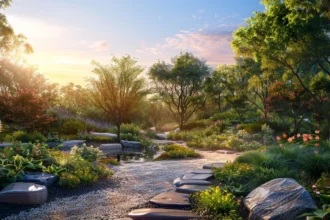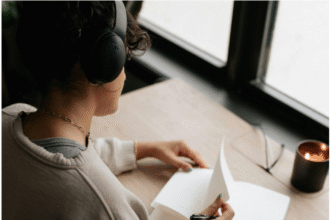Trekking in Nepal isn’t just a journey on foot__it’s a passage through centuries-old culture, awe-inspiring mountain views, and soul-stirring silence. While Everest Base Camp may be the best-known name, there are lesser-trodden trails like Pikey Peak and alpine wonders like the Gokyo Renjo La Pass that rival it in beauty and serenity. Whether you seek solitude, high passes, or a condensed adventure to Everest’s foot, these three treks offer something unforgettable.
1. Pikey Peak Trek __ The Best View of Everest (7 Days)
A Hidden Gem in Lower Everest
Pikey Peak Trek is an off-the-beaten-path jewel in the lower Solu region, south of Everest. Not only is it a quiet alternative to the bustling trails of the Khumbu, but it also provides what Sir Edmund Hillary himself claimed to be the best view of Everest.
Trek Highlights::
- Panoramic sunrise view from Pikey Peak (4,065m) showcasing Everest, Lhotse, Makalu, and Kanchenjunga.
- Serene monasteries like Thupten Chholing, offering spiritual immersion.
- Diverse rhododendron forests and quaint Sherpa villages untouched by modern tourism.
- Opportunities to experience Sherpa hospitality without the altitude strain of higher treks.
Cultural Encounters::
The trek takes you through authentic Sherpa settlements such as Junbesi and Phaplu, where traditional stone houses, prayer flags, and yak pastures define daily life. Unlike the busier Everest trails, here you’ll share tea with locals without the tourist crowds.
Ideal For::
- Beginners or those short on time.
- Cultural travelers wanting a less commercial trek.
- Photographers chasing clear vistas with fewer footprints.
Best Time::
Spring (March–May) and autumn (September–November) offer the clearest skies and blooming trails.
2. Gokyo Renjo La Pass Trek __ Glacier Lakes & High Passes (15 Days)

The Ultimate Everest Alternative
The Gokyo Renjo La Pass Trek is for adventurers craving Everest without the crowds. It trades the classic Base Camp route for dazzling turquoise lakes, ancient Sherpa villages, and one of the best Himalayan crossings: Renjo La Pass (5,360m).
Trek Highlights::
- A climb to Gokyo Ri (5,357m.) for panoramic views of Everest, Cho Oyu, Lhotse, and Makalu.
- Stunning glacier-fed Gokyo Lakes, sacred to both Hindus and Buddhists.
- The Renjo La Pass crossing, with jaw-dropping vistas and an air of alpine challenge.
- Less-traveled trails with equally rewarding scenery and fewer lodges, offering a more raw trekking experience.
Cultural & Natural Marvels::
This trek goes deep into the Khumbu’s sacred valley, with yak herders, ancient monasteries, and glacial terrain. Villages like Dole and Marlung give you a glimpse of Sherpa life above 4,000 meters.
The Ngozumpa Glacier, the longest in the Himalayas, is both surreal and intimidating, a true testament to nature’s grandeur.
Ideal For::
- Trekkers seeking a quieter, scenic, and slightly more challenging Everest region route.
- Photographers and wildlife watchers__expect blue sheep, eagles, and Himalayan tahrs.
- Those wanting Everest views without going to Base Camp.
- Best Time::
Mid-September to mid-November and April __ May, when the pass is snow-free and the skies are cobalt blue.
3. Short Everest Base Camp Trek __ Fast Track to the Icon (10__12 Days)
The Classic, Condensed
The Short Everest Base Camp Trek delivers the legendary EBC experience in a streamlined itinerary. It’s ideal for trekkers on a tight schedule who want the glory of standing beneath Everest without lingering too long.
Trek Highlights:.
- Reaching Everest Base Camp (5,364m), and witnessing the Khumbu Icefall.
- A sunrise hike to Kala Patthar (5,545m), the best spot for close-up views of Everest.
- Exploring the Sherpa capital of Namche Bazaar.
- Visiting iconic spots like Tengboche Monastery with views of Ama Dablam.
Trail Dynamics::
The trek starts with a dramatic flight to Lukla and quickly ascends through the Dudh Koshi valley. Because it’s condensed, the trek requires careful acclimatization, with one or two rest days built in__usually at Namche and Dingboche.
Despite being a shorter itinerary, it includes all the classic views and landmarks: Everest, Lhotse, Nuptse, Pumori, and Ama Dablam.
Cultural & Spiritual Touches::
From Buddhist chants in monasteries to prayer wheels lining the trail, spirituality accompanies you throughout the journey. The Mani walls and chortens remind trekkers that this is more than a mountain__it’s a living sanctuary.
Ideal For::
- Time-bound travelers crave the full Everest experience.
- Fit trekkers with some high-altitude exposure or experience.
- Those wanting a bucket-list achievement without committing to a 16–20 day itinerary.
Best Time::
Pre-monsoon (March__May) and post-monsoon (late September–November) for clear views and mild weather.
Comparison at a Glance
| Feature | Pikey Peak Trek | Gokyo Renjo La Pass Trek | Short Everest Base Camp Trek |
| Duration | 6–8 Days | 14–16 Days | 10–12 Days |
| Max Elevation | 4,065m | 5,360m | 5,545m |
| Difficulty | Moderate | Moderate to Challenging | Challenging |
| Best For | Beginners, culture seekers | High-pass lovers, solitude seekers | Time-bound adventurers |
| Everest View | Panoramic (from distance) | Gokyo Ri and Renjo La | Kala Patthar (close-up) |
| Cultural Experience | High | Medium to high | Medium |
Why These Three Treks Stand Out
1. Diversity in Landscape,
- Pikey Peak features green rolling hills and rhododendron forests.
- Gokyo has glacial lakes, frozen valleys, and high alpine passes.
- Everest Base Camp is a wild mix of moraines, icefields, and rock.
2. Accessibility,
- Pikey Peak is reachable by road via Phaplu, avoiding Lukla’s flight risks.
- Gokyo and EBC require the Lukla flight or longer road alternatives.
3. Unique Views of Everest,
Each trek offers its own angle::
- Pikey Peak:: Panoramic, crowd-free.
- Gokyo Ri & Renjo La:: Distant, majestic, and surreal.
- Kala Patthar:: The ultimate front-row seat to Everest.
Essential Trekking Tips
- Acclimatize Well __Even on the short EBC trek, including rest days. Gokyo’s high passes require careful pacing.
- Pack Light but Right __ Layers are key. Pikey is lower and milder, while Gokyo and EBC involve cold nights above 4,500m.
- Respect Local Culture __ Always walk clockwise around stupas, ask before photographing people, and don’t step over prayer flags.
- Support Local __Stay at family-owned teahouses, eat local dishes like Sherpa stew and tsampa, and tip your porters and guides.
- Insurance & Safety _ Ensure your travel insurance covers high-altitude trekking and helicopter rescue.
Final Thoughts:: Which Trek Should You Choose?
- Want a spiritual, less commercialized trek with Everest views? Go for Pikey Peak.
- Dreaming of glaciers, lakes, and a true alpine escape? Choose Gokyo Renjo La.
- Need a short, punchy path to Base Camp? Opt for the Short EBC Trek.
Whatever your choice, these three treks reveal different facets of the mighty Khumbu region__some serene and quiet, some icy and challenging, all of them unforgettable.
FAQs
Q1::Can I combine any of these treks?
Yes. Gokyo Renjo La and EBC can be combined into one longer circuit. Pikey Peak is in a different sub-region, so it’s best done separately.
Q2:: Are permits needed for all?
Yes. TIMS Card and Sagarmatha National Park Permit are mandatory for all these treks. Pikey also requires a local entry permit for Solu.
Q3:: Is a guide necessary?
For Pikey Peak, solo is possible. For Gokyo and EBC, a guide is highly recommended, especially in case of weather delays or altitude issues.
Q4:: What’s the cost range?
- Pikey Peak:: $600–$900
- Gokyo Renjo La:: $1,200–$1,600
- Short EBC:: $1,100–$1,400
Q5:: Are these treks safe for solo female travelers?
Yes., especially with a reputable agency and guide. Pikey is safest due to village density. Gokyo and EBC are also well-frequented.



